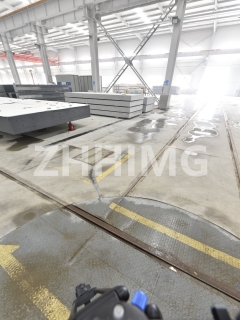Bridge CMM, short for Bridge Coordinate Measuring Machine, is a high-precision measuring tool commonly used in various industrial fields, such as aerospace, automotive, and manufacturing. One of the essential components of the Bridge CMM is the granite structure. In this article, we will discuss why granite is the preferred material for the structural elements of Bridge CMM.
Firstly, granite is an incredibly dense and stable material. It has a negligible amount of internal stress and minimal deformation under load. This property makes it an ideal candidate for precision measuring instruments like Bridge CMM because it ensures the stability of the reference frame throughout the measurement process. High stability ensures that the measurements taken will be accurate and repeatable. Moreover, the stability of the granite structure ensures that the Bridge CMM can withstand various environmental factors, such as changes in temperature and humidity.
Secondly, granite has excellent vibration damping properties. The high density of granite helps to absorb and dissipate vibrations from the machine's moving parts during measurement, preventing unwanted vibrations from interfering with the measurement process. Vibrations can significantly affect the accuracy and repeatability of the measurements, decreasing the precision of the Bridge CMM. Thus, the excellent vibration damping properties of granite make it an ideal material to ensure accurate and precise measurements.
Thirdly, granite is highly resistant to wear and corrosion. Bridge CMM often undergoes extensive use in various industrial operations and is exposed to harsh environments. The use of granite ensures that the machine will maintain structural integrity over extended periods. It also promotes the long term life of the Bridge CMM, reducing the need for frequent repairs or component replacements ultimately.
Moreover, the use of granite also ensures that the surface of the machine has a high degree of flatness and rigidity, essential factors for making precise measurements. The flatness of the granite surface is crucial in positioning the workpiece, allowing the machine to make measurements in various directions. The rigidity of the granite surface ensures that the machine can maintain the accuracy of the probe's position, even under extreme forces.
In conclusion, the use of granite as a structural material for Bridge CMM is an excellent choice due to its high stability, excellent vibration damping properties, resistance to wear and corrosion, and its ability to maintain a high degree of flatness and rigidity. All of these properties support the high precision and accuracy of the measurement tools, ensuring the reliability of the equipment over long periods.
Post time: Apr-16-2024

